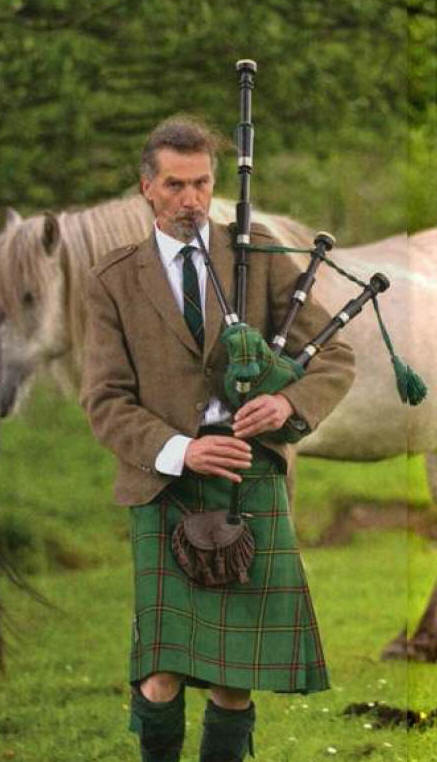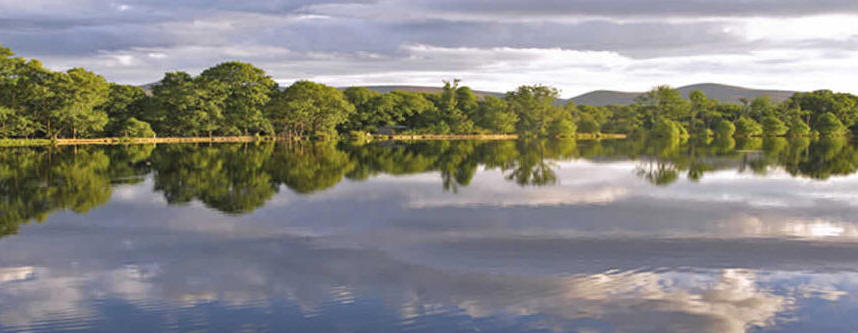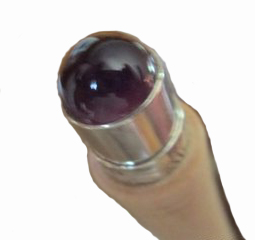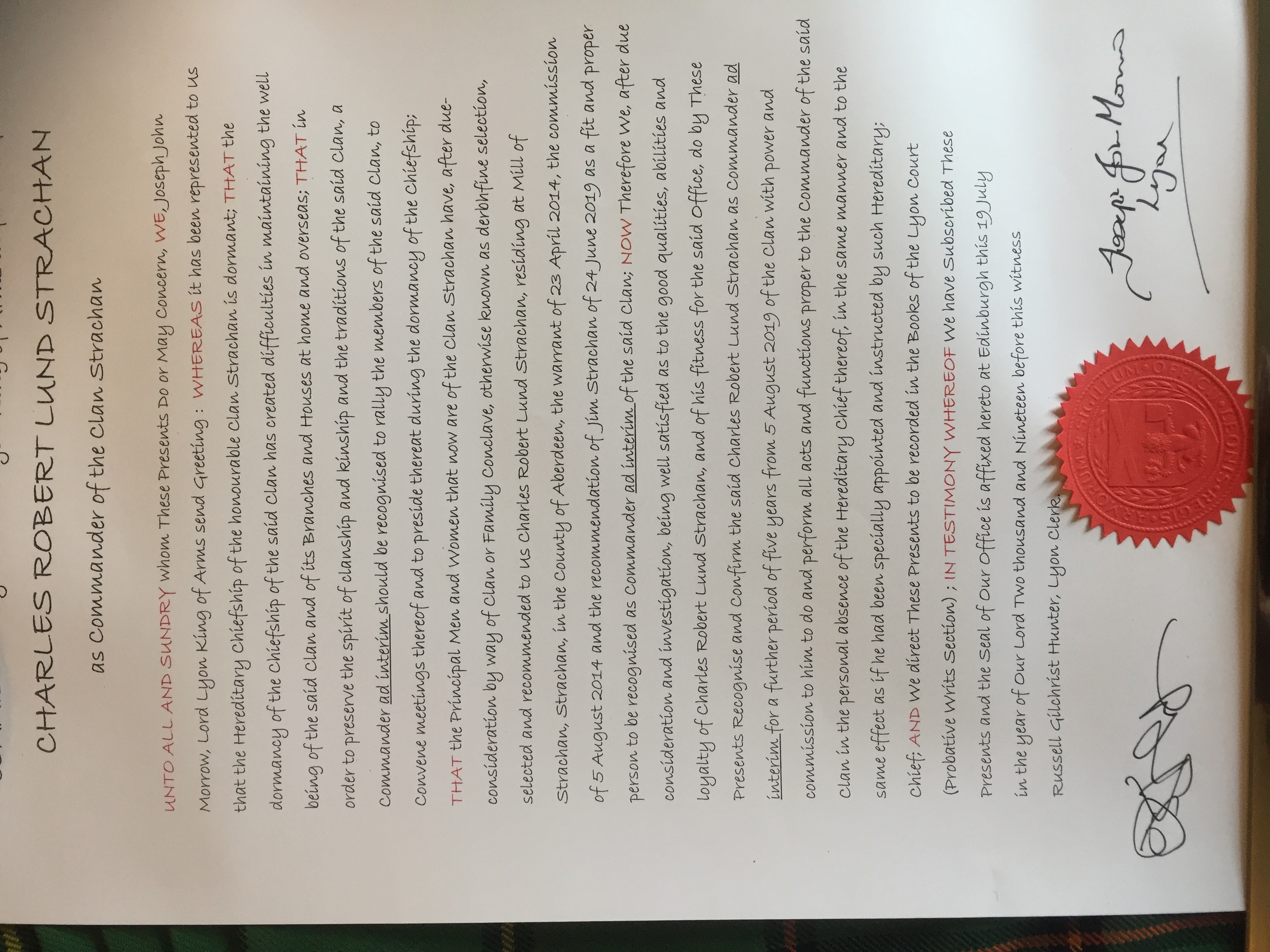Commander of Clan Strachan
Rob Strachan, Mill of Strachan, Strachan,
Kincardineshire
Commander of the Honourable
Clan Strachan

Charles Robert Lund (Rob) Strachan (/strawn/) currently resides at the Mill of Strachan, Strachan, Aberdeenshire.
Rob was born in Munster, Germany (BAOR), and is the eldest son of retired British Ambassador, Major Benjamin Leckie Strachan, CMG and his second wife, Lize Strachan. As a result of his father's career as British Ambassador, Rob has lived in several countries including Kuwait, Jordan, Yemen, Lebanon, Palestine, and Algeria; interspersed with six years in Canada.
Rob attended Loretto Nippers and Upper School, outside Edinburgh, Midlothian, Scotland. He attended South London College; and Harper Adams University, an agricultural college in Shropshire.
In 1994, Rob bought a derelict Mill on the Isle of Mull and restored it to a three bedroom house where he lived for ten years with his partner and two of his four children. While on Mull, Strachan played rugby with the Mull Rugby Club.
Rob plays guitar, piano and bagpipes and was also a member of 'The Banchory Singers', who won 'The Peterhead Shield' in a battle of choirs at the 2012 Aberdeen Music Festival. Strachan was also a semi-finalist in the Pop category for the 2010 UK Songwriting Contest. His entry, Nefertiti was a Queen, was played on BBC Radio 6 and BBC Radio Scotland
Rob's parents acquired The Mill of Strachan in the 1960's, and in the true spirit of highland hospitality, they have been warmly welcoming Strachan visitors to the village and their home ever since. Today, there is a multi-generation family tie to the Mill, and the expectation that each generation treat visitors as extended family.
Rob parents, Ben (12 July 2016) and Lize (17 January 2021) have since passed away, and Rob is now semi-retired, and residing at the Mill of Strachan in the Parish of Strachan, Aberdeenshire; which runs along the Waters of the Feugh at the west-end of the village. Situated in the heart of stunning Deeside, the backdrop to the Mill of Strachan is Clachnaben and the heather covered hills of the Grampian Mountains. It is an area of breathtaking natural beauty.
The Mill of Strachan has two well stocked lochs totaling 8 acres, one solely for fly fishing, the other, larger loch for both bait and fly fishing. The lochs are regularly stocked with rainbow trout, though brown & brook trout have been caught. The Mill also incorporates a sheep farm, a tack shop and feed shop, an equestrian centre, and a Highland Pony stud.

Mill of Strachan, Strachan, Aberdeenshire
Rob returned to his family's home at the Mill of Strachan in 2008, where he built a home, restored the fish rearing ponds, the dams, and has been managing the rainbow trout fishery for the lochs at the Mill.
Rob is passionate about his Scottish heritage, and in particular history pertaining to Clan Strachan.
In 2014, Clan Strachan held a Family Convention (or Ad Hoc Derbhfine) under the jurisdiction of the Court of the Lord Lyon, with Charles Burnett Esq., Ross Herald Extraordinary as presiding officer. The meeting ended amicably with unanimous support to recognise Rob Strachan, as Commander of the Honourable Clan Strachan. On 5 August 2014, a warrant was issued by Lord Lyon King of Arms, Dr Joseph J. Morrow CBE, QC, LLD, DL, FRSE.
2014 Commander Warrant

Click image above to open new tab with high resolution image
2019 Commander Warrant
Click image above to open new tab with high resolution image
Before, during, and now after the 2014 Family Convention, we continue to seek hereditary heirs male, bearing the surname Strachan, who are descendant from Strachan of Thornton. This family were the last of the Chiefly stem that also held the baronetcy of Nova Scotia. The last of the Strachan of Thornton family was Admiral Sir Richard John Strachan, Bt. Sir Dicky (as he was known by his friends) died in 1828 [obituary]. Sir Richard Strachan married, 28th April 1812, Miss Louisa Dillon. Of this marriage were born, 30th April 1813, a son who died young, and three daughters. Matilda Frances, the eldest daughter, born 31st May 1814, became the Countess Bertholdi (d. 1889); Charlotte Leopoldine, the second daughter, born 31st August 1815, married, 2nd April 1837, Emmanuel, Count Zichny-Terraris, and died in India in November 1851; Sarah Louisa, the youngest daughter, is the Princess St Antimo, Italy (1818-1881). If you believe you are have a heritable right to the Chiefship of Strachan, please email the Society or directly contact the Court of the Lord Lyon. Hereditary heirs will likely be expected to provide genealogical proofs. If you need genealogical assistance, please contact Garry Strachan, AGRA Member, certified genealogist.
Insignia of the Strachan Chiefship
The last recognised chief of Clan Strachan, Admiral Sir Richard John Strachan, Bart., died in 1828. Much earlier, in the mid-1600's, his ancestors sold the Thornton estate, and shortly thereafter moved to London, where several generations served as officers in the Royal Navy. Essentially, Clan Strachan as a social group, and family culture, had died at least a century or more before the death of our last chief.
With the revival of Clan Strachan at the 2014 Family Convention, organisers had prior discussions with the Supervising Officer regarding the importance of creating and maintaining clan traditions. Traditions represent a critical piece of our culture. They help form the structure and foundations of families in our society. They remind us we are part of a history that defines our past, shapes who we are today, and who we are likely to become.
The insignia of the Strachan chiefship are based upon ancient Celtic clan and tribal
tradition (Adam: Clans, Septs and Regiments of the Scottish Highlands: 112-13,114). It
consists of two elements, the White Rod, and the Clan Sword, each of which
are discussed below.
The White Rod of Clan Strachan
The White Rod, of patriarchal sway, An Slat Bhan', is a straight white rod, anciently represents a clan chief's judicial authority over all members and possessions of the clan. It is required to be both white and straight as to remind the Chief or Commander that he ought to be just in his administration of the clan, and pure and upright in his actions (Keating, p. 23).

The White Rod is exclusively used in Clan Strachan investiture ceremonies or other formal clan functions. During a formal clan function, the Sennachie raps on the door announcing the entrance of the Chief or Commander, and the Clan Council. As the Sennachie enters the room carrying the White Rod, he is followed by the Clan Sword Bearer holding-high the Clan Sword high, the Clan Council, with the Chief or Commander at the rear. The clansmen in attendance are encouraged to applaude the Chief and his Council during the procession. These processions are on rare occusions, such as a Clan Strachan Formal Dinner, or at the beginning and/or end of a Clan Gathering.

The Clan Strachan White Rod was custom hand-crafted by artist Kevin Brady in 2013, and is made of Hard Maple. It is 30-32 inches long, and embedded in the sterling silver head is the crest badge of the Chief of Clan Strachan. The mid-section is hand-carved open spiral lattice design to represent its ancient Celtic origins. The three segments that make up the length of the shaft are conjoined with two sterling silver trim bands (or bezels).

The endcap (or "Filial") is also Sterling Silver and consists of a dark blue Amethyst cap stone, which represents the primary livery colour of ancient chiefly Strachan armorial bearings (e.g. Azure).
The White Rod is properly held on the top third shaft by the Seannachie when used to rap on a door (to announce the arrival of the Chief at official clan functions). Otherwise, it would be held by the Chief or Seannachie from the bottom section of the rod. The White Rod is owned by the Clan and placed in the custody of the Clan Strachan Charitable Trust who maintains custody of The White Rod for the Seannachie who is charged with its safekeeping. It is within the Chief's privy to appoint the Seannachie. "An~Seannachie" is a hereditary office within the Clan.
The Clan Strachan Sword
The Clan Strachan Sword anciently represented the Chief's power of life and death over their clansmen. In modern times, the sword represents the Chief's legitimate power as provided under Scots Law over their clan as authorized by the Sovereign through the Court of the Lord Lyon.

As shown above, the Clan Sword is a sharpened and battle-ready Scottish Basket-Hilt Broadsword, and the traditional weapon of the highland clansman.
